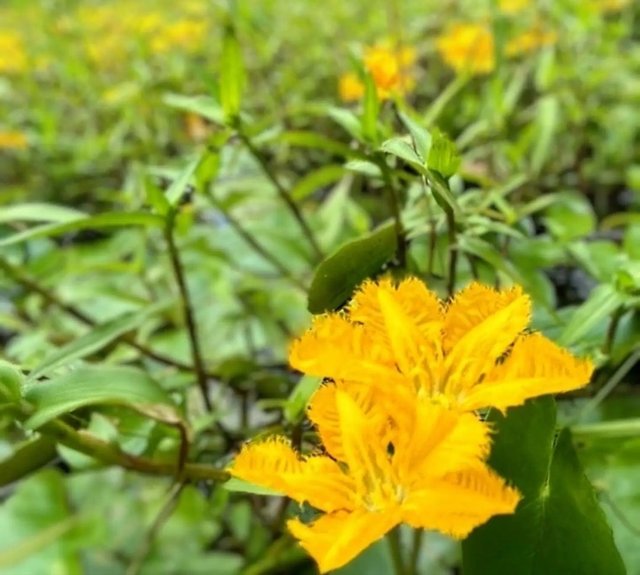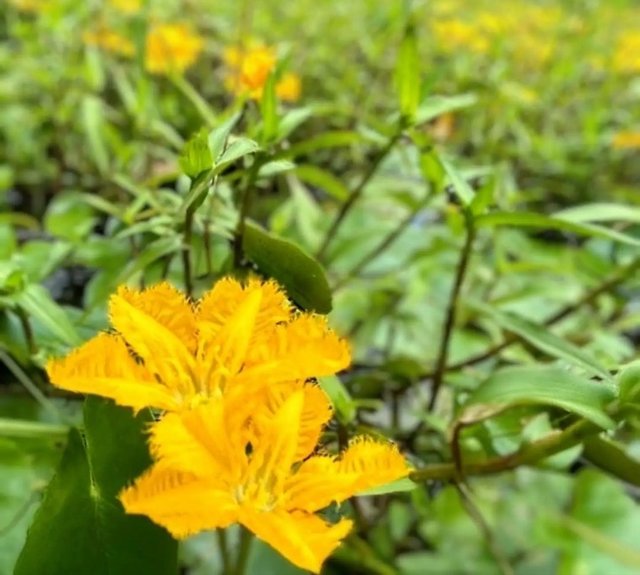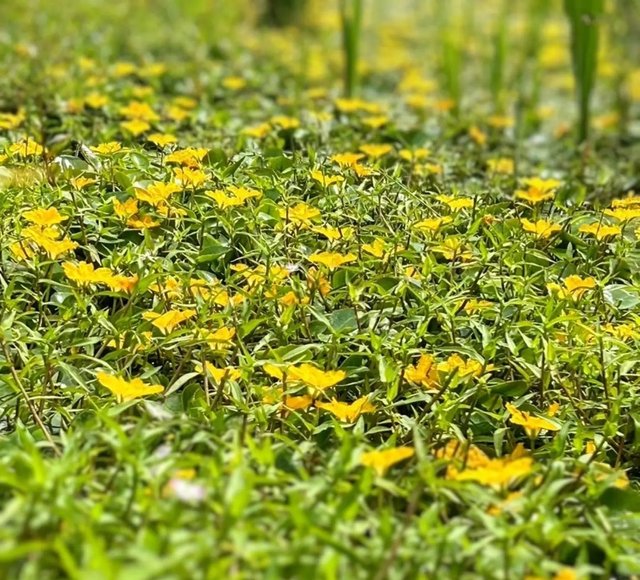Nymphoides peltata is an aquatic perennial plant that belongs to the family Menyanthaceae. It is native to parts of Europe and Asia but has become invasive in various regions around the world, including North America. This species is of ecological interest due to its ability to spread rapidly in freshwater ecosystems, forming dense mats on the surface of lakes, ponds, and slow-moving rivers. Below, we explore the botanical characteristics, ecological impact, habitat preferences, and management of this intriguing yet often problematic plant.
Botanical Description
Nymphoides peltata is named after the distinctive shape of its leaves and the yellow flowers it produces. The plant is anchored to the substrate of the waterbody by long, thin roots. However, its most noticeable feature is its floating, heart-shaped leaves that grow on the water's surface, forming dense mats.
Key Features:Leaves: The floating leaves of Nymphoides peltata are round or heart-shaped and can reach up to 15 cm in diameter. They have a leathery texture with prominent veins, and their upper surface is usually green, while the underside can be purplish. The leaves resemble those of water lilies but are smaller and thinner.
Flowers: The plant produces bright yellow, five-petaled flowers with a distinctive fringed or ruffled edge. Each flower is about 2 to 4 cm across and grows on stalks that extend just above the water’s surface. The blooming period typically occurs from mid-summer to early autumn.
Roots and Stems: The stems of the plant are submerged, thin, and can grow horizontally, producing new plants by vegetative propagation. The plant can also reproduce via seeds, making it highly prolific.
Habitat and Distribution
Nymphoides peltata thrives in a variety of freshwater environments, including lakes, ponds, marshes, and slow-moving rivers. It prefers nutrient-rich waters and can tolerate both full sun and partial shade. Although it is native to Europe and Asia, its introduction to North America and other regions as an ornamental plant for ponds has led to widespread invasion. It has now become naturalized in many areas outside its native range.
In the United States, it is found primarily in the Northeast, the Midwest, and parts of the Pacific Northwest. In these regions, it often outcompetes native aquatic vegetation, leading to significant ecological disturbances.




Thanks For Reading
Device Information
| Device | Redmi Note 10 Pro |
|---|---|
| Lens | 64 mp |
| Location | Bangladesh |

@tipu curate
Downvoting a post can decrease pending rewards and make it less visible. Common reasons:
Submit